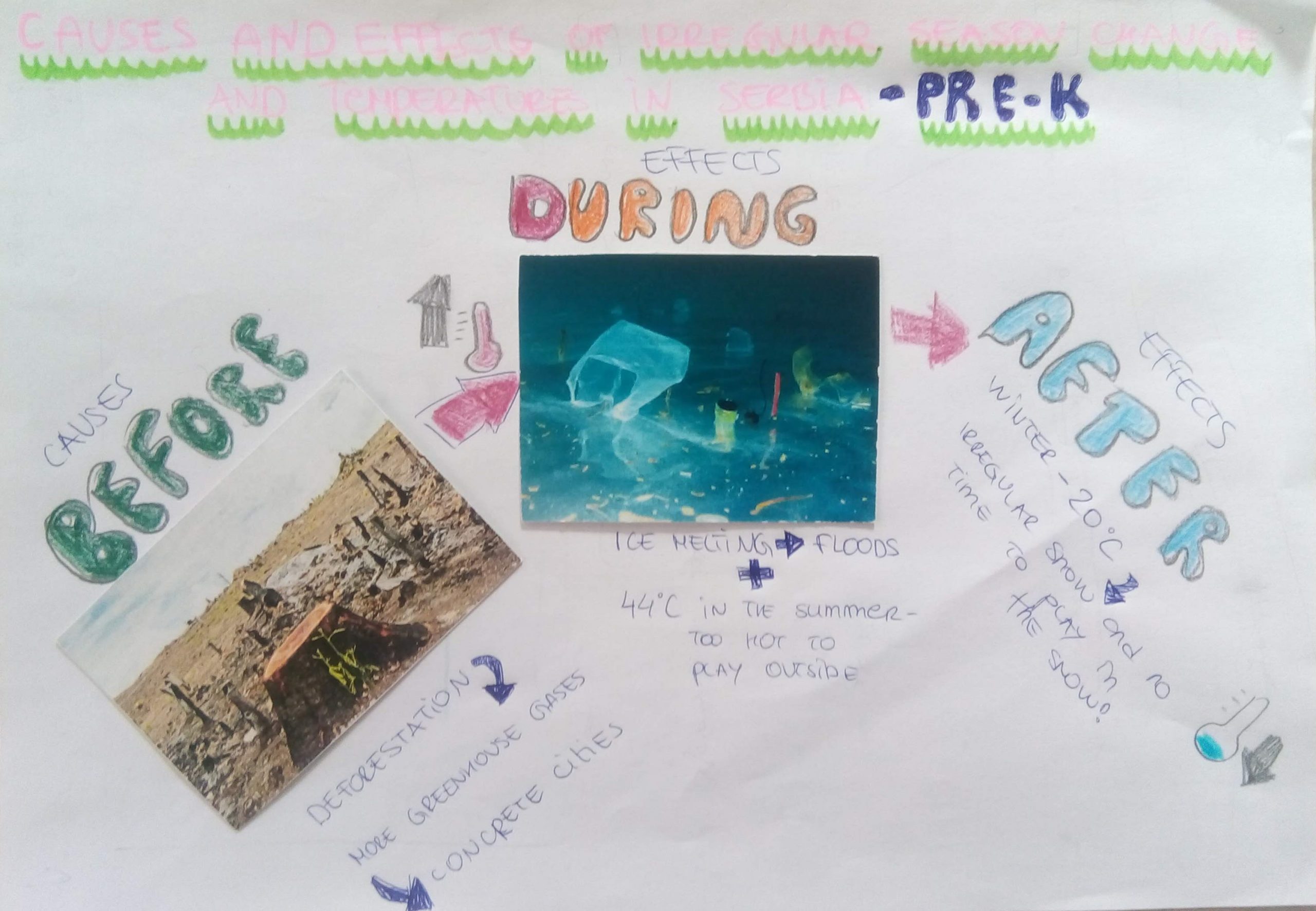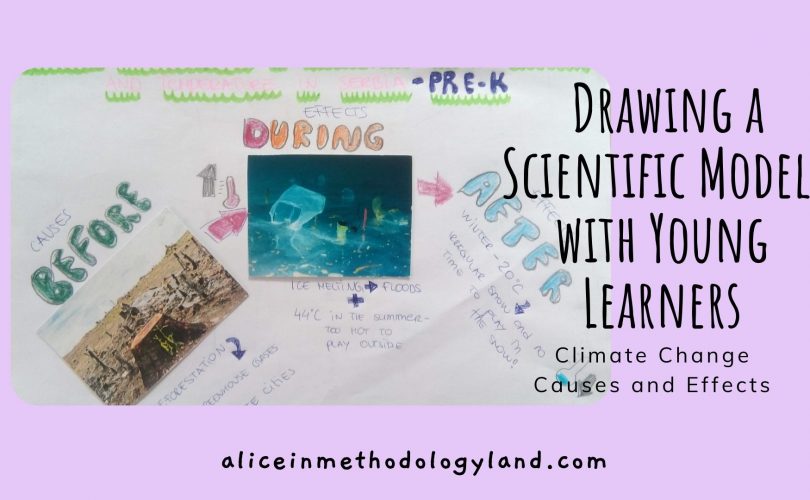In the last few years, my perspective on environmental education changed significantly. Before starting, I was focused on pollution and spreading awareness. Now, when it comes to climate change, my main focus shifted to deforestation as a cause for many other effects related to climate change, and I often discuss climate change with my young learners.
Scientific modeling helped me organize my thoughts and schematically put together the evidence learned through the years. Of course, additional research helped me realize many things, but the scientific modeling showed some connections which were harder to see with the naked eye.
All of this didn’t change my practice since my instruction already revolved around environmental education. Still, I was able to deepen my knowledge and gain better tools to develop my curriculum.
The most considerable influence it had on me is deepening the need to analyze the situation in my own country. It also helped me brainstorm possible solutions. My ideas ranged from reforestation of dry land to fighting the pollution inside our concrete cities.
Causes and Effects of Irregular Season Changes and Temperatures in Serbia
Initial scientific model
I believe that drawing models help young learners (and all learners in general) easily explain complex issues.
When it comes to spring frost in Serbia, I have always struggled to explain it to children, but it looks logical, easy, and connected after the scientific model. So I played with the design, and I made it messy on purpose. I just loved the combination of writing and adding photos to make a collage.

Describe the local phenomenon related to climate change that you chose. Is it an effect or is it a cause?
The local phenomenons related to climate change in this model represent two effects and one cause. I worked in a mixed group, which is why I have pictures (for the learners who can’t read except sight words) and explanations for the 1st graders to be peer teachers and explain.
1. Temperatures in Serbia in summer go up to 44 degrees Celsius, and they are growing every year. As a result, it’s impossible to play outside, and people have health issues, which children notice.
2. Because of this, we have irregular snow patterns, and some years we don’t get to play in the snow at all. The winter is short, the temperatures go below -20 degrees Celsius, and then the snow quickly melts.
3. Because of the irregular snow patterns, sometimes we have spring frost in February, March, or even May, which is a big problem for crops and other food.
All of these changes are something that children can see and feel by themselves, and this is why it is appropriate to introduce climate change with these issues at such a young age.
Revised scientific model

Final scientific model

Constructing an Evidence-Based Explanation: Why are seasons and temperatures in Serbia irregular? Explanation of the Phenomenon
The main reason behind our fluctuating temperatures is deforestation. However, this is a starting point that creates other aspects of climate change in our region. By cutting down trees, a tremendous amount of carbon is released, and it stays trapped in the lower layers of the atmosphere, creating the greenhouse effect, which is even more noticeable in concrete cities. This is the main reason for the heatwave we are experiencing this year.
The primary evidence we should consider is the number of forest fires constantly happening around the world. Deforestation is happening as we speak, and the scientists’ prognosis is that many rainforest ecosystems will cascade soon if we don’t do something about it. This continues as the greenhouse gases increase, melting the ice on land and causing the sea levels to rise. As a result, many coastlines are sinking, and at the same time, ocean acidification impacts marine ecosystems, especially corals, which are experiencing bleaching.
All the large, urban cities are the reason behind our local climate change. Deforestation, even cutting down and destroying the last pieces of greenery in our cities, is the main reason for the constant temperature rise. European heatwave in 2019 reached almost 50 degrees Celsius! With no trees to lower the level of greenhouse gases and Greenland melting to the level it should have reached in 2070, and it’s no wonder we have immersive floods every other year. All of this causes extensive heat and the irregular winters with almost no snow. The concrete cities make a good starting layer for ice, and the winter sometimes comes back in March, causing spring frosts.
A video explanation with important steps of any scientific model (for students and teachers)
To conclude
The modeling was a great experience, and I will use it in my future lessons. I already love using mind maps, so I think this will be a great new skill. When it comes to climate change and my young learners, I felt that anything could be explained through a drawing, which never happened before.
Here is some peer feedback other educators shared with me:




How would you include scientific modeling in your young learner classroom? Are there some activities you think might help them? Should we even teach climate change to young learners? Write in the comments or via the contact page.

Click here to explore my store where 99% of materials are forever free!
All the materials except lesson plans and 30+ page interactive activity books will be free FOREVER! Why? Because sharing is caring, and 2020 hasn’t been kind to all of us. Please consider donating so that I can keep making FREE materials for everyone and keep my website open for all of you.
Don’t forget to leave a review when you download materials! It’s just a minute of your time, and it means a lot to me.
P.S. The store and the freebie library are not the same thing – the freebie library has some extra materials like conference presentations and webinar recordings which are not available in the store ✨
The subscription link for the store is below my bio in every post. ?








[…] Learn more from Milica Alice by exploring her blog. […]